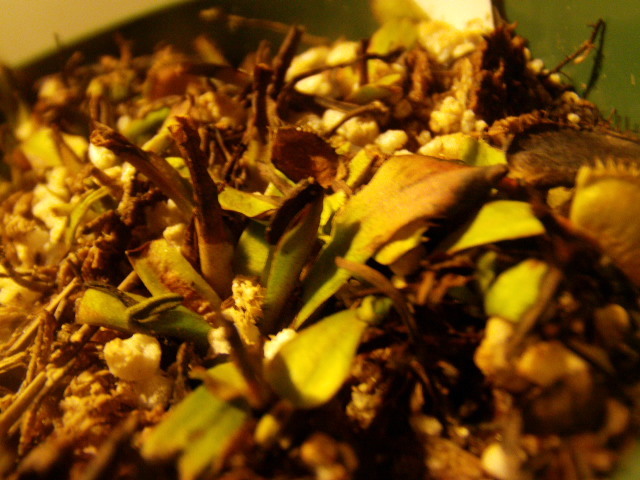Question
 New traps turning blac
New traps turning blac
I have been collecting and growing carnivorous plants since the beginning of last spring. My first growing season was very successful and fun, however I live in zone 5 and even tho this winter has been mild compared to normal in November I brought all my plants inside my tropicals are doing good in south window but I have been having some problems with my Venus flytraps and some Sarrecenia as well. I made the mistake of leaving my plants outside when having many rain storms then brought them into a closed of breeze way and put them in a south east facing window while water was in the trays. I have many plants there the room stays 30-50 degrees, most Venus flytraps Sarrecenia and temperate sundews are doing well but I noticed many where to wet and a white fuzzy mold began to grow on the surface of the soil. I have been treating this with a sulfur based fungicide the last 2 months once a week and it went away but I have many flytraps that have new traps forming then turning black and dying before they are grown. I have lost a couple already due to this. The sulfur based fungicide does not seem to be helping. I have been keeping them just damp and they are in a mix of 1 part peat to 1 part perlite and where thriving in it all growing season. The picture I am attaching is just one of my flytraps but they all look very similar to this and I do not want to lose anymore. So if your are able to help me with this problem I would greatly appreciate it.
AnswerHi Tom,
It looks like a variety of things might be happening here. First it looks like you have some kind of root rot going on. This could be from from the mold, lack of dormancy, or because they've had inconsistent conditions during the winter. I also see this appearance quite a bit when Venus flytraps have been watered with hard water. You didn't mention what your water source was. Flytraps are the most sensitive to hard water, sundews being next. Sarracenia take longer to show hard water damage with Nepenthes being the least sensitive. If you're not already, be sure your using either rainwater, distilled water, melted snow, or water purified by reverse osmosis.
In the future, find an appropriate place like the room you mentioned, just park them there for the winter. You said the room in 30-50F and that is fine. Be sure to spray with a fungicide beforehand as a preventative. Sulfur based fungicides are good preventatives, but are not very good at curing fungal problem. Like you were doing keep the soil damp, but not real wet during dormancy when plants are not growing. Also, you don't need to bring them inside in the fall until temperatures are going to be below 25 degrees, and/or it looks like daytime won't break freezing. Mild frosts will help them go thoroughly dormant. You also mentioned the mistake of leaving them out in the rain. Being rained on is beneficial to the plants since it flushes the pots, and helps keep fungus at bay. You may need to protect against severe splash erosion during thunderstorms (some kind of soil top dressing will help with this), but rain is not a bad thing. Our plants get rained on all winter.
For now the best you can do is unpot your plants, and inspect the roots/rhizomes to see how they look. If they look brown and mushy, say some final words. If sections look nice and white with growing tips repot those into fresh soil. With your Sarracenia, inspect the rhizomes and feel them. They should look and feel firm with white roots coming off the growing tip. If you see dead areas, cut those away with a sharp knife, spray the cut area with your fungicide, and repot the good sections in fresh soil.
Let me know how things go.
Good Growing!
Jeff Dallas
Sarracenia Northwest
http://www.cobraplant.com






